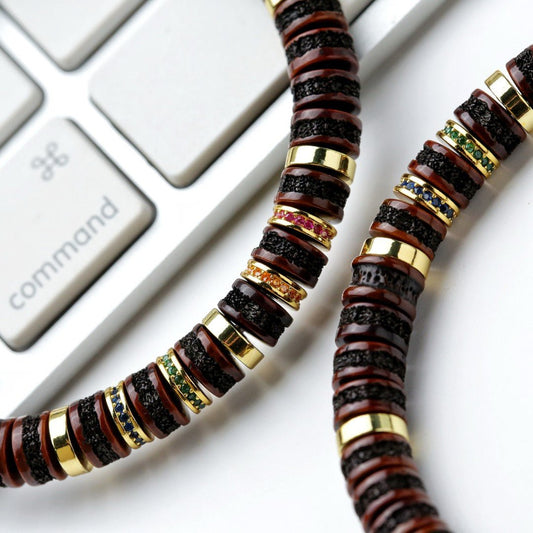
Amidst the complex pattern amidst Tibetan religious beliefs stand two meaningful icons: the colorful thangka and consecrated bodhi token. Individually, in particular fashion, offer access to elevated consciousness. The thangka, a colorful canvas, shows holy beings, mystical shapes, or doctrinal episodes, providing insight for inner reflection.
Yet, the bodhi bead, often crafted from noble stones, wooden material, fruit stones, or bone, is a tangible reminder of Buddha's enlightenment under the bodhi tree. Touching the beads encourages spiritual concentration.
- Simultaneously, the thangka and the bodhi bead demonstrate the connection of beauty and piety. They offer a tangible link to the primeval enlightenment of Tibetan Buddhism.
Chronicles Inscribed in Camel Ossicles
Across distant millennia, primordial treasures whisper tales concerning a world long gone. These are not gilded objects crafted by neglected empires, but simple camel bones marked with characters that contain the riddles of a bygone period. Every fragment whispers the echo derived from a life lived, a journey experienced, and a connection to the ancient wisdom encompassing which envelops us all.
- Those pieces
- Treasures
- Provide
Unlocking the Symbolism within Thangka Masterpieces
Tangkas are glowing paintings on canvas, meticulously crafted by Tibetan artists to depict holy figures and scenes from Buddhist philosophy. Each detail within a thangka is laden with symbolism, forming a complex tapestry of visual narratives that guide the viewer on a mindful journey. The chromatics used in thangkas are not merely aesthetic choices but carry essential connotations, symbolizing different aspects of the Buddhist beliefs. From the majestic figures to the intricate ornamentation, thangkas offer a outlook into the rich world of Tibetan Buddhism, inviting us to ruminate upon its wisdom.
- Classic thangka art often depicts key Buddhist figures such as Buddha Shakyamuni, Bodhisattvas like Avalokiteshvara and Manjushri, and enlightened beings from various sects of Tibetan Buddhism.
- Amidst these representations lies a wealth of awareness that can be comprehended by those who engage the symbolic language of thangkas.
Path to the Buddha's Path to Enlightenment: Embodied in Beads and Bone
Upon the winding road to nirvana, the Buddha harnessed signs imbued with profound depth. Entire bead and piece held within them the heart of his instruction, presenting glimpses into the form of reality. Using their configuration, the Buddha expressed profound insights that surpass the realm of tangible perception.
From specific reflective beads, crafted from special materials, emerged vibrations that harmonized with the subtle powers within. The composition of a life form, meticulously transformed into amulets, served as tangible emblems of the impermanence essential to all manifestations.
Thangkas: Windows into Himalayan Spirituality
Thangkas luminous paintings on cloth serve as effective representations of Himalayan spirituality. These intricate works of art, meticulously created with delicate brushstrokes, depict a vast array displaying Buddhist deities, mandalas, and scenes from venerable scriptures. Each thangka is a profound portal for meditation and contemplation, offering cognition into the intricate teachings of Buddhism.
- They are often used in ritual ceremonies and
- reflecting states of spiritual realization.
- Thangkas act as not merely decorative treasures but rather doorways into the rich and fascinating world of Himalayan spiritual traditions.
Discover the Depth of Bodhi Beads: A Path to Mindfulness and Compassion
Each unit on a bodhi bead mala whispers tales of ancient wisdom, guiding us on a journey through the tranquil waters of mindfulness. As we grip these intricately formed beads, our fingers trace the contours of each one, anchoring our concentration in the present moment. The gentle burden of the beads against our palms serves as a tangible reminder to breathe, fostering a sense of peace.
- Whenever a bead that passes between our fingers, we encourage compassion, extending it first to ourselves and then outward to the world.
- Buddhism teaches us that mindfulness is a art form that requires patience and devotion.
Using the rhythmic repetition of mantra or simply the mindful tallying of the beads, we unshackle from the relentless chatter of the mind.
The practice involving bodhi beads is a gentle invitation to restore our connection with ourselves and the world around us.
The Power of Intention: Crafting a Camel Bone Bracelet for Spiritual Growth
Determination acts as a profound catalyst in our lives, shaping our experiences and guiding us towards our spiritual goals. When we combine this intention with the old knowledge of crafting a camel bone bracelet, we create a potent synergy that can catalyze our spiritual growth.Camel bone carries profound symbolism, representing endurance. Its natural beauty and rustic charm serve as a constant reminder of the elemental strength within each of us.By deliberately picking each shard, channel our desires into the bracelet. With every knot or interlock, we interlace our hopes, dreams, and aspirations for spiritual evolution. This act of creation becomes a powerful affirmation, bonding us with our inner wisdom and guiding us on a road to insight.- Draw inspiration from the bone’s inherent patterns.
- Picture your goals interlaced in the bracelet’s form.
- Consecrate the bracelet through ritual to increase its potency.
Interpreting Camel Bone Within Buddhist Contexts
In the rich tapestry within Buddhist tradition, artifacts often hold profound symbolic meaning. Across these varied objects, camel bone stands out as a singular and engaging element. Amidst history, this material has been used in the crafting during various Buddhist implements, each imbued with specific symbolisms.
- Regarded as a symbol of resilience and strength due to the camel's ability to persist in harsh environments, camel bone often reflects spiritual fortitude.
- Likewise, the color and texture concerning camel bone are believed at some to hold auspicious connotations, expressing purity and serenity.
Thereupon, camel bone has become a important part of Buddhist custom, serving as a tangible association to the profound teachings embodied by this ancient faith.
Thangka Illustrations: Devotional Narratives
Within the ethereal realm of Tibetan Buddhism, Thangka paintings emerge as sacred portals to enlightenment. These breathtaking works, meticulously crafted by skilled artists known as thangkapa, depict a myriad embracing vibrant deities, celestial beings, and mythical creatures. Each brushstroke fills profound spiritual significance, narrating ancient tales and philosophical notions.
- Covering a vast collection of Buddhist iconography, Thangkas serve as both devotional objects and instructional tools. Loyal practitioners gaze upon these paintings during rituals and meditations, seeking to enhance spiritual wisdom.
- Richly detailed with intricate details alongside a multitude of vibrant hues, Thangkas are considered windows into the divine. The painting acts as a symbolic representation of the Spiritual Leader's teachings and the path to liberation.
Using their striking imagery and symbolism, Thangka paintings offer a glimpse into the rich theological traditions of Tibet. They are a testament to the enduring elegance of Tibetan art and its profound ability to invigorate.
Embracing the Duality: Thangkas and the Cycle of Life and Death
Thangkas, radiant pictorial scrolls from Tibetan culture, embody a meaningful examination of life’s transience. Each intricate depiction depicts deities and beings engaged in the progressive passage of life and death, a tapestry of birth, growth, impermanence, and resurgence. The artists skillfully interlace these concepts within the thangka's realm, highlighting the correlation of all things. Through vivid figures, they invite us to meditate on our own being. The cycle moves, a tempo of coming and going, emphasizing the preciousness of each moment. By embracing this duality, thangkas teach us to appreciate the beauty in both life's joys and sorrows.Chains of Spirituality: The Significance of Bracelets in Buddhist Practice
In the intricate tapestry of Buddhist practice, seemingly straightforward objects often hold profound meaning. Among these are bracelets, which serve as tangible symbols of devotion and commitment to the journey of Buddha. Worn on the wrist, a bracelet serves as a constant reminder of one's aspirations and intentions. It can stand for the impermanence of life, stimulating practitioners to remain balanced in the present moment. Some bracelets may harbor sacred glyphs, such as mantras fashion mala bracelets or the names of Buddhas, which are perceived to generate positive energy and guard. Others frequently are made from constituents with spiritual significance, like sandalwood or lotus seeds, strengthening the bracelet's impact. Ultimately, the significance of a Buddhist bracelet exists far beyond its physical form. It becomes a powerful tool for prayer, a inspiration to live in harmony with the teachings of Buddha, and a manifestation of one's unwavering belief.